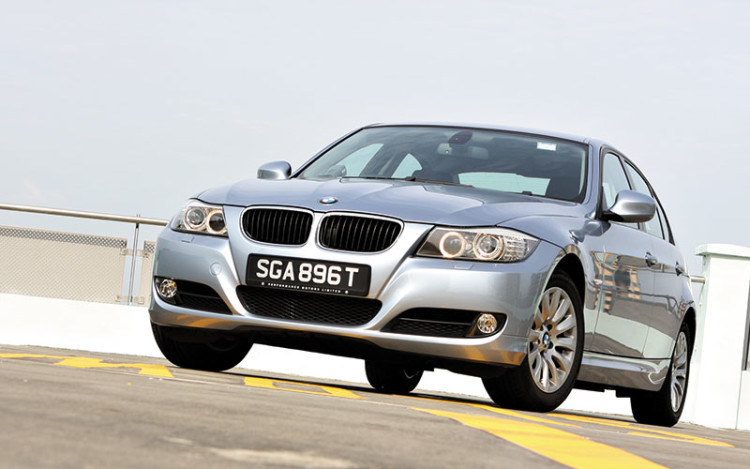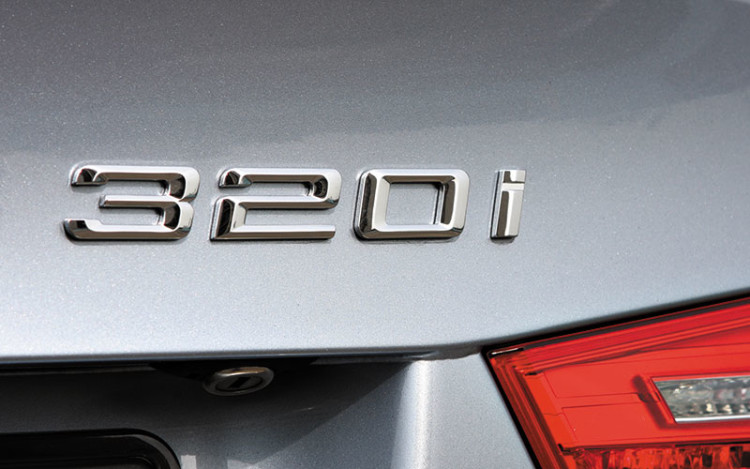 To keep the 3 Series competitive in the light of fresher models like the Mercedes-Benz C-Class and Audi A4 (which we review here), minor mid-life revisions have been made. The snout gets a new bonnet with creases, a different bumper design and revised headlights.
To keep the 3 Series competitive in the light of fresher models like the Mercedes-Benz C-Class and Audi A4 (which we review here), minor mid-life revisions have been made. The snout gets a new bonnet with creases, a different bumper design and revised headlights.
Not to be outdone by the competition, daylight driving lights are now incorporated into the headlamp cluster. This is one design trend I wholeheartedly support. These lights will help illuminate the cars driven by negligent people who forget to turn on their headlights at night or when visibility is very poor.
The mopey look of the rear lamp cluster is now gone, with the revised rear lamps looking considerably better. Signal indicators now utilise LEDs for quicker responses.
 Front and rear tracks have been increased. Besides some benefits to stability, the 24mm wider rear track, in particular, gives base models with 16-inch wheels a more macho look. The gap between rear fender and tyre in the outgoing model did no favours to the image or appearance of the 320i.
Front and rear tracks have been increased. Besides some benefits to stability, the 24mm wider rear track, in particular, gives base models with 16-inch wheels a more macho look. The gap between rear fender and tyre in the outgoing model did no favours to the image or appearance of the 320i.
Interior changes are minor and virtually unnoticeable, unless you are a real nit-picker. A navigation system is standard in all new 3 Series cars. The 320i cars get a locally fitted Garmin set, while the 323i and 335i are fitted with the revised i-Drive that utilises the factory system. Navigation with the Garmin set requires pretty deft fingers for the touch screen. Dainty digits would be an advantage!
Two versions of the 320i are marketed here. The base 320i at $131,800 is pretty basic. Seats are leatherette, air conditioning is mechanically controlled, a driver’s centre armrest is missing and lights are non-Xenon. It is definitely worth paying $8,000 for the Professional model, which has leather seats, centre armrest, climate control air conditioning and Xenon lights. For both versions, power seat adjustment is only for the rake.
 The chassis of the 3 Series is still a class act. The suspension revisions seem to have given further improvement to ride comfort, with no detriment in handling. And the wider track does give the car added-on limit stability.
The chassis of the 3 Series is still a class act. The suspension revisions seem to have given further improvement to ride comfort, with no detriment in handling. And the wider track does give the car added-on limit stability.
Steering is direct and responsive but overly weighty. The energy required at parking speeds is quite unexpected at this day and age. Active steering (a costly $5,000 option) would reduce the heft, in addition to enhancing the feel.
The 320i is not the quickest car in its class but the engine is refined and willing to rev.
The mid-life changes may not be drastic but they do give the 320i added ammunition to take on the competition. It’s still the king of the luxury compact class.
BMW 320i 2.0 (A)
ENGINE 1995cc, 16-valves, inline-4, turbocharged
MAX POWER 156bhp at 6400rpm
MAX TORQUE 200Nm at 3600rpm
GEARBOX 6-speed automatic with manual select
0-100km/h 9.8 seconds
TOP SPEED 218km/h
CONSUMPTION 12.5km/L (combined)
CO2 EMISSION Not available
PRICE INCL. COE Not applicable












